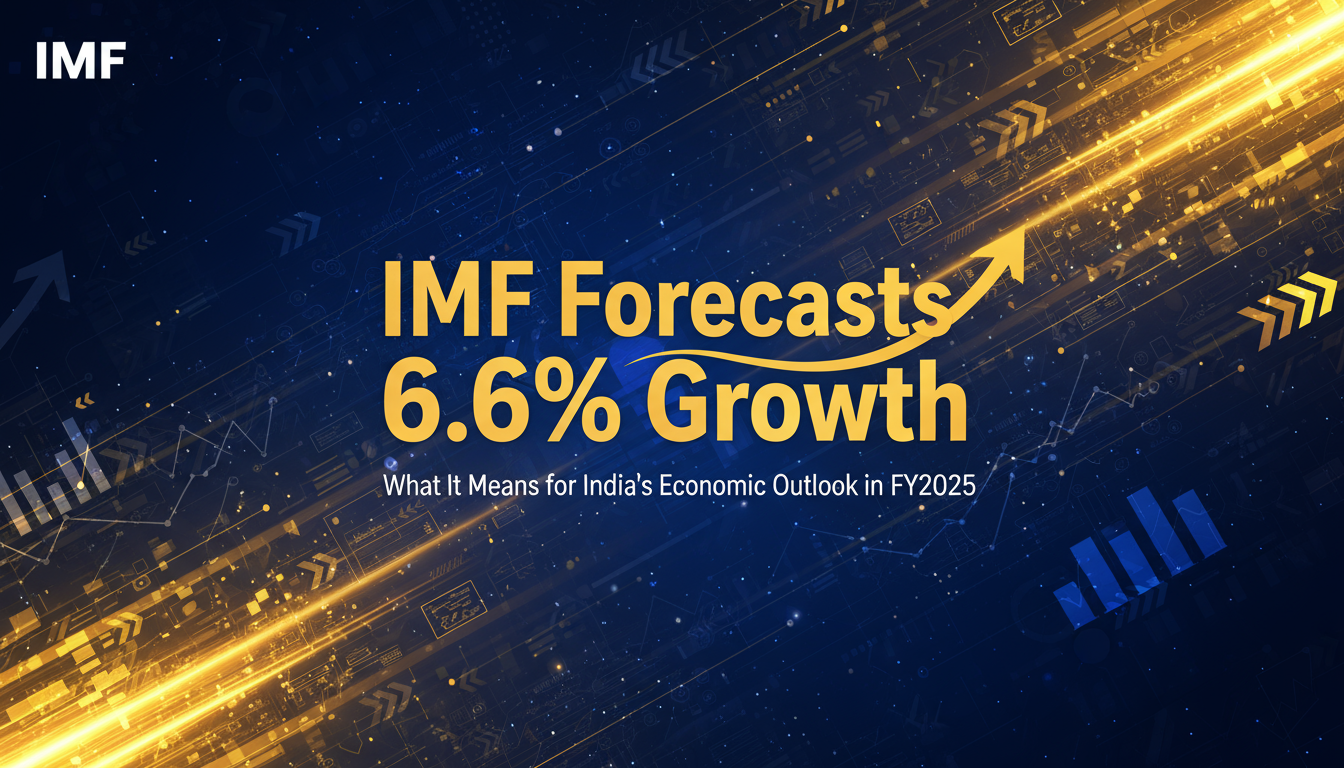
Posted on October 25, 2025
The International Monetary Fund predicts that India’s economy will grow at 6.6% for the financial year 2025, which reaffirms India’s position as one of the fastest-growing major economies in the world. India continues to have a compelling economic story in the face of global economic uncertainty, weak growth in advanced economies, and geopolitical instability. Two important engines of growth are strong domestic demand and infrastructure spending from the government. The services sector of the economy is also holding up well.
A Positive Outlook Amid Global Slowdown
The latest issue of the IMF’s World Economic Outlook highlights the divergent nature of strong growth for India amid a slowdown in the world economy. The projected growth rate for the world economy is just shy of 3%, while India’s is projected at 6.6%. We know slow growth for the world economy may look small, but India’s projected growth will be increasingly important and contribute more and more to world output.
The report attributes India’s ongoing momentum to solid macroeconomic management, inflation control, and policy reform to sustain theirs even as other emerging markets are facing capital outflows and currency swings.
Key Drivers Behind the Growth
- Strong Domestic Consumption– India’s large middle class continues to firmly support private consumption, which is still the backbone of GDP growth. Higher disposable incomes, higher urban employment levels, and rising digital usage have supported reasonable consumption levels.
- Investment on Infrastructure by Government– The Union government’s outlayon highways, railways, logistics parks, and renewable energy projects meant a largeuptick in capital formation. Public sector spending will be anticipated to crowd in private investment in the comingquarters.
- The “Make in India” initiativeisstimulatingmanufacturing growth– PLI schemes are drawingdomestic and foreign investments in sectors like electronics, semiconductors, and vehicles,anddiversifyingthe manufacturing basewillbenecessaryforsustaining growth over time.
- Growing Services Exports– India’s information technology and business services exports showremarkableresilienceto global headwinds. Financial technology, consulting, and artificial intelligence-enabled services continue to achievestrong value growth and contribute foreign exchange.
Challenges on the Horizon
Despite this, the IMF has also flagged a number of downside risks. Sustained inflationary pressures, particularly those stemming from food and energy prices, could erode household purchasing power. In addition, global oil price volatility remains a risk to India’s import bill and fiscal stability.
In addition, weak foreign trade and tightening global monetary conditions may weigh on export performance and investment flows. The IMF suggests continuing with fiscal discipline and purposely providing spending on welfare to generate inclusive growth.
What This Means for Businesses and Investors
For investors, the IMF’s projection reinforces confidence in India’s economic fundamentals and sectors such as infrastructure, manufacturing, renewable energy, and technology will continue to appear attractive in FY 2025.
With uncertainty in many other emerging markets at a relatively high level, foreign institutional investors are likely to view India as a stabilisation point, particularly given the Reserve Bank of India’s steady stance on monetary policy and inflation at levels within their target band.
Looking Ahead
If India is to maintain this growth trajectory, it will establish itself as the third largest economy in the in to the next decade. The focus now should be on creating jobs, improving skills, and enhancing productivity, so that the economy’s growth can be translated into prosperity for all.
While the IMF’s 6.6% growth estimate, a slight decrease from the preceding year’s growth rate, indicates resilience and recovery, India appears to be in a position to navigate global challenges and maintain its growth leadership through FY2025 and beyond with continued reform effort and sensible policy management.
